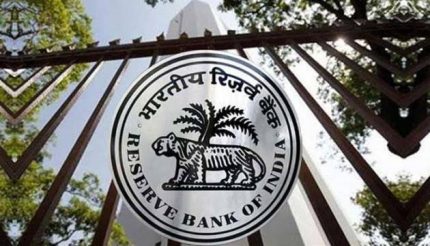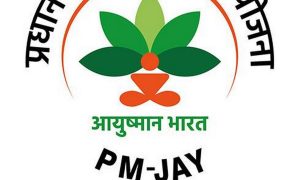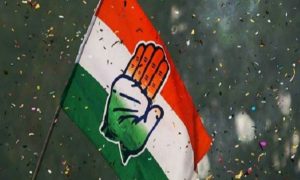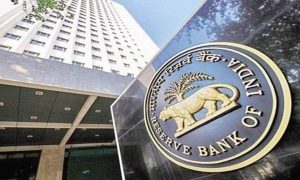The Reserve Bank of India (RBI) commenced its three-day Monetary Policy Committee (MPC) meeting on December 6, 2023. The committee’s verdict on the crucial policy rates is eagerly awaited and is scheduled to be disclosed on December 8, 2023.
The influential gathering is presently in discussions regarding the upcoming bi-monthly monetary policy, with prevailing anticipation of a sustained hold on the short-term key lending rate. This is attributed to the accelerating momentum in GDP growth and manageable inflation levels.
In February of this year, the RBI raised the repo rate to 6.5 per cent, marking the conclusion of the interest rate hike cycle that commenced in May 2022. This cycle was triggered by the Russia-Ukraine war and subsequent disruptions in the global supply chain, leading to elevated inflation in the country.
The consistent maintenance of the repo rate over the last four bi-monthly monetary policies suggests that the RBI is content with the existing level of interest rates. The conclusion of the interest rate hike cycle in February 2023 implies that the RBI is confident in the gradual alleviation of inflationary pressures. This is consistent with the anticipation that inflation will persistently decrease, moving closer to the RBI’s targeted level in the forthcoming months. Additionally, the sustained economic growth serves as additional justification for maintaining unchanged interest rates.
The entire nation awaits the MPC’s decision on December 8 with great anticipation. The results of their meeting will bear substantial consequences for the Indian economy, influencing areas such as borrowing, lending, investments, and overall market sentiment.
The industry has an optimistic outlook and expects RBI to maintain a status quo on its policy rates.
Deepak Sood, Partner and Head Fixed Income, Alpha Alternatives said, “In the upcoming MPC meeting, we expect a status quo on policy rates and stance. The RBI may boost growth projections based on strong H1 data while keeping inflation projections unchanged. Expectations of up move in the next few inflation readings, especially due to volatile food prices, and to keep INR stable, RBI may not lower the guard while maintaining a slightly cautious tone. Possible tweaks to liquidity management practices may be announced, and the market will look out for any clarity on holding OMO sales as announced in the last MPC. From a rates markets perspective, now is a favourable time to increase allocations to duration with a 9–12-month investment view.”
Read More: India’s Economy To Grow At 6.8% In Current Fiscal: CII
Echoing a similar stance on the same, Suman Bannerjee, CIO, Hedonova – A US-based hedge fund said, “I anticipate the RBI to maintain a cautious stance, keeping the repo rate at 6.5 per cent, despite the high GDP growth of 7.6 per cent in the July-September quarter. There might be a marginal upward revision in the annual growth forecast, with the central bank’s continued focus on liquidity management and credit growth.”
Deepak Agrawal, CIO-Debt, Kotak Mahindra AMC shares an elaborate stance on the same. “RBI action to increase risk weights on banks unsecured lending appears timely given the second quarter GDP growth at 7.6 per cent. Also, RBI’s growth and inflation estimates have been fairly accurate. GDP for FY 24 is likely to exceed 6.5 per cent and Inflation in FY 24 is likely to average 5.40 per cent in line with RBI estimates. Since the last policy, global yields have trended lower reflecting an expectation of pivot/ easing in CY 2024 by global central banks. Given the ~ 4.5 per cent inflation estimate for FY 25, there is a case for RBI to change the monetary policy stance to ‘neutral’, however, RBI may prefer to be in ‘wait and watch’ mode, keeping rates and monetary policy stance unchanged,” Agrawal said.
Vinod Nair, Head of Research, Geojit Financial Services shared, “A better-than-estimated Q2 GDP growth, ease in global oil prices, and drop in global bond yield will be the silver lining for the MPC. However, the expectation of a rise in domestic November inflation, drop in Rabi cultivation, and increase in foodgrain prices will influence the RBI to adopt a cautious approach in the short-term.”
Vivek Banka, Co-founder, Goalteller said, “With the markets on a roar, there is a wide section of the industry, expecting a pause and maybe reduction in interest rates, however, with the recent caution exercised by the RBI by placing higher capital requirements for personal and credit card loans, I doubt that the RBI would look at reducing rates at this juncture and risking further froth. If the RBI commentary is not very hawkish letting rates be at current levels, I think that’ll be a fair positive for the markets in general.”
Read More: Forex Update: India’s Foreign Exchange Reserves Cross $600 Billion Mark After 4 Months
Atul Parakh, CEO, Bigul sums up industry expectations well in his brief note. “The RBI is expected to keep its key interest rates steady, in line with the actions of other global central banks and response to the latest macroeconomic trends. This approach is supported by the substantial decrease in crude oil prices and robust GDP statistics, providing a buffer for the central bank amidst persistent global economic challenges. Regarding forward-looking statements, the RBI governor’s commentary is expected to be predominantly dovish. Market participants should closely monitor the RBI’s views on unsecured and consumer loans and its assessment of the broader economic and banking landscape, particularly in light of inflation and other pertinent data,” Parakh added.
Feedback from the industry suggests an anticipation that the central bank will maintain the repo rate at 6.5 per cent. The reduction in home loan lending rates signals heightened competition among banks and financial institutions, indicating a stable interest rate environment. This stability has the potential to boost confidence among prospective homebuyers, offering clearer long-term financial commitments with predictable equated monthly installment (EMI) payments.
Atul Monga, CEO and Co-founder, Basic Home Loan explained, “The upcoming meeting of the RBI MPC is eagerly anticipated, and market expectations are inclined towards maintaining the existing repo rate. The expectation of a consistent repo rate implies that there may be no changes in home loan rates. This stability in interest rates is likely to bring relief to borrowers, particularly those in the housing market. However, we will have to closely analyse the MPC’s decision for subtle shifts in their stance, considering the current economic landscape. Factors such as inflation, growth forecasts, and global economic conditions will play a role in shaping the committee’s decision. While we await the decisions, the potential choice to keep the repo rate unchanged underscores the central bank’s strategy to balance economic recovery while ensuring price stability.”
Kaushik Mehta, Founder & CEO, RUloans Distribution Services furthered, “As the RBI is expected to maintain a cautious and potentially hawkish stance in the current financial year, impacting both home loans and personal loans, it underscores a prudent approach to managing inflationary pressures. While this caution may pose challenges in the short term, it’s crucial to recognize that the RBI’s commitment to keeping interest rates unchanged provides stability to the entire lending landscape, instilling confidence among borrowers.”
“This approach, though more evident in its impact on personal loans, is considered a temporary measure. Looking ahead to the next financial year, there is optimism that the RBI’s measures will contribute to a more favourable lending environment, with expectations of home loans outpacing personal loans. The central bank’s dedication to economic stability, reflected in its reluctance to change rates, signals a steady trajectory. As borrowers navigate through this period, the stability in interest rates has positive implications for both home loans and personal loans, fostering an environment conducive to well-informed financial decisions, particularly with the housing sector anticipated to experience robust growth,” shared Mehta.
Read More: Microsoft India Announces Hike Of 6% On Business Software From Feb 1
Vikas Singh, CEO and Co-founder, Sugmya Finance said, “The upcoming RBI MPC meeting is anticipated to maintain the status quo on the repo rate, holding it unchanged. This decision is pivotal for us. A stable repo rate implies a continuation of the current interest rate environment, offering a sense of predictability in terms of borrowing costs. This is particularly crucial for liquidity management and operational planning. A steady rate fosters an environment conducive to sustained lending and economic growth. Additionally, it provides an opportunity to consolidate and recover from the economic uncertainties brought about by recent events.”
“Although maintaining the current interest rates is unlikely to significantly alter the RBI’s overall stance, it is expected to have implications for the unsecured loan sector. The RBI is likely to scrutinize the unsecured loan portfolios of banks closely. Should there be a decrease in consumer loans, this could potentially affect the sales of consumer and luxury goods, leading to reduced consumption in these sectors. Conversely, other sectors such as automotive, housing, and gold are not expected to experience major impacts from this decision, as they remain outside the purview of the RBI’s recent guidelines. This differential impact highlights the RBI’s selective focus within the financial ecosystem, balancing macroeconomic stability with sector-specific considerations,” Parakh added.
Read More: Tata Group planning to build one of the biggest iPhone factories in India: Report
The resilient 7.6 per cent GDP growth in the September quarter reinforces the argument for sustaining stable rates. This growth underscores a sturdy economic foundation, enabling the RBI to prioritize long-term economic stability over immediate policy adjustments.





































